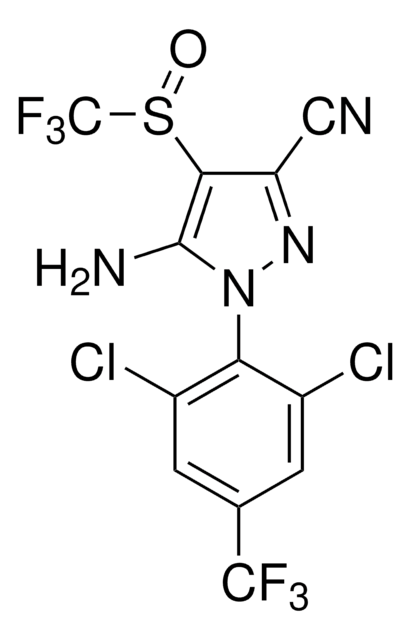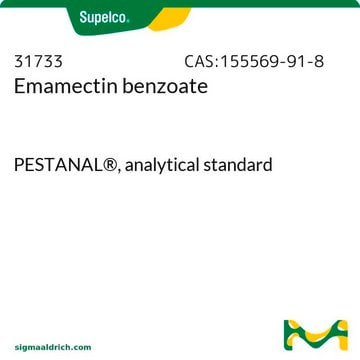37894
Imidacloprid
PESTANAL®, analytical standard
About This Item
Produtos recomendados
grau
analytical standard
Nível de qualidade
linha de produto
PESTANAL®
prazo de validade
limited shelf life, expiry date on the label
técnica(s)
HPLC: suitable
NMR: suitable
gas chromatography (GC): suitable
pf
140-146 °C
adequação
passes test for identity (NMR)
aplicação(ões)
agriculture
environmental
formato
neat
cadeia de caracteres SMILES
[O-][N+](=O)NC1=NCCN1Cc2ccc(Cl)nc2
InChI
1S/C9H10ClN5O2/c10-8-2-1-7(5-12-8)6-14-4-3-11-9(14)13-15(16)17/h1-2,5H,3-4,6H2,(H,11,13)
chave InChI
YWTYJOPNNQFBPC-UHFFFAOYSA-N
Procurando produtos similares? Visita Guia de comparação de produtos
Categorias relacionadas
Descrição geral
Find more information here: Neonicotinoids
Aplicação
Informações legais
Palavra indicadora
Danger
Frases de perigo
Declarações de precaução
Classificações de perigo
Acute Tox. 3 Oral - Aquatic Acute 1 - Aquatic Chronic 1
Código de classe de armazenamento
6.1C - Combustible acute toxic Cat.3 / toxic compounds or compounds which causing chronic effects
Classe de risco de água (WGK)
WGK 2
Ponto de fulgor (°F)
Not applicable
Ponto de fulgor (°C)
Not applicable
Equipamento de proteção individual
dust mask type N95 (US), Eyeshields, Faceshields, Gloves
Choose from one of the most recent versions:
Já possui este produto?
Encontre a documentação dos produtos que você adquiriu recentemente na biblioteca de documentos.
Os clientes também visualizaram
Protocolos
Learn more about Neonicotinoids - active substances used in plant protection products to control harmful insects.
Analysis of banned neonicotinoid insecticides from dandelion blossoms using QuEChERS and LC-MS.
Nossa equipe de cientistas tem experiência em todas as áreas de pesquisa, incluindo Life Sciences, ciência de materiais, síntese química, cromatografia, química analítica e muitas outras.
Entre em contato com a assistência técnica














